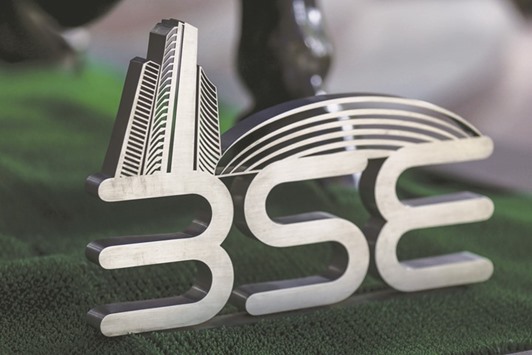Indian shares rallied to a six-month high as mid-sized banks extended a rally amid merger speculation.
The S&P BSE Sensex climbed 0.8% to 28,985 points yesterday, the highest close since September 8.
Axis Bank rose for the first time in three days. Dhanlaxmi Bank rallied 4.9% to the highest price since August 2015, and Union Bank increased for a third day. Speculation of industry consolidation was spurred last week after CNBC-TV18 reported that HDFC Bank, ICICI Bank and IndusInd Bank approached the government informally with respect to buying Axis.
Moody’s Investors Service said demonetisation will be credit positive for India as it is likely to reduce tax avoidance and corruption, which cheered market players.
“A surprise growth of 7.1% in third quarter GDP data and no negative comments in Trump’s speech have given a renewed buying interest in the market. The impact of cash crunch seems over-estimated. Prima facie, the February auto sales numbers are looking better as discretionary spending is gradually picking up,” said Vinod Nair, head of research, Geojit Financial Services.
Both the key indices have rallied by almost 9% in the past two months, largely on the back of a growth-oriented Budget, better-than-expected earnings from blue chip companies and strong global cues.
Stocks of automobile companies led by M&M, Hero Motocorp and Bajaj Auto were in limelight and gained up to 3.13% largely on the back of encouraging sales numbers for February. Other prominent gainers included Tata Steel, Dr Reddy’s, ITC, Sun Pharma, HDFC, Axis Bank, Infosys, SBI, Hindustan Unilever, ICICI Bank, Power Grid and Cipla, rising by up to 3.66%.
Out of the 30-share Sensex pack, 21 ended higher while nine led by GAIL, NTPC, Tata Motors, Bharti Airtel, RIL, Coal India, Lupin and Wipro ended lower, which limited the gains.
“Banks rallying on merger speculation is the flavour of this season,” said Rakesh Kumar, a Mumbai-based strategist with Elara Securities India. “We advise investors to be cautious as at the end, one or two banks will get merged, not all of them. Some regional banks have not participated in the rally this far and they are seeing some traction now.”
Federal Bank gained 0.8% to a record and South Indian Bank extended its two-day gain to 4%. Reserve Bank of India Deputy Governor Viral Acharya said last week it’s not clear if so many public sector banks were needed or whether the system would be better off if they were consolidated into fewer but healthier banks.
India’s economy is forecast to expand less than estimated as banks work to replace cash sucked out by Prime Minister Narendra Modi’s shock clampdown in November. Gross domestic product will probably grow 7.1% in the year through March, the Statistics Ministry said in a statement in New Delhi on Tuesday. That’s faster than the 6.8% median estimate in a Bloomberg survey.
GDP expanded 7% in the three months to December, compared with 6.1% in the survey and the previous quarter’s 7.4%.
Meanwhile the rupee yesterday weakened against the US dollar, tracking the losses in the Asian currencies markets.
The home currency opened at 66.79 against the US dollar. Rupee closed at 66.83 per US dollar, down 0.21% from its Tuesday’s close of 66.69. So far this year, it has risen 1.64%.
Among Asian currencies, South Korean won lost 0.950%, Japanese yen 0.914%, Singapore dollar 0.447, Taiwan dollar 0.341%, China offshore 0.246%, China renminbi 0.196%, Indonesian rupiah 0.187%, Malaysian ringgit 0.169%, Thai baht 0.169%, Philippines peso 0.062% and Hong Kong dollar 0.012%.
The 10-year bond yield was trading at 6.928%, compared to Tuesday’s close of 6.871%. Bond yields and prices move in opposite directions.
Since the beginning of the year, foreign institutional investors (FIIs) are net buyers of over $1.9bn in both local equity and debt markets.
The dollar index, which measures the US currency’s strength against major currencies, was trading at 101.75, up 0.62% from its previous close of 101.12.

The BSE Sensex closed up 0.8% to 28,985 points yesterday
